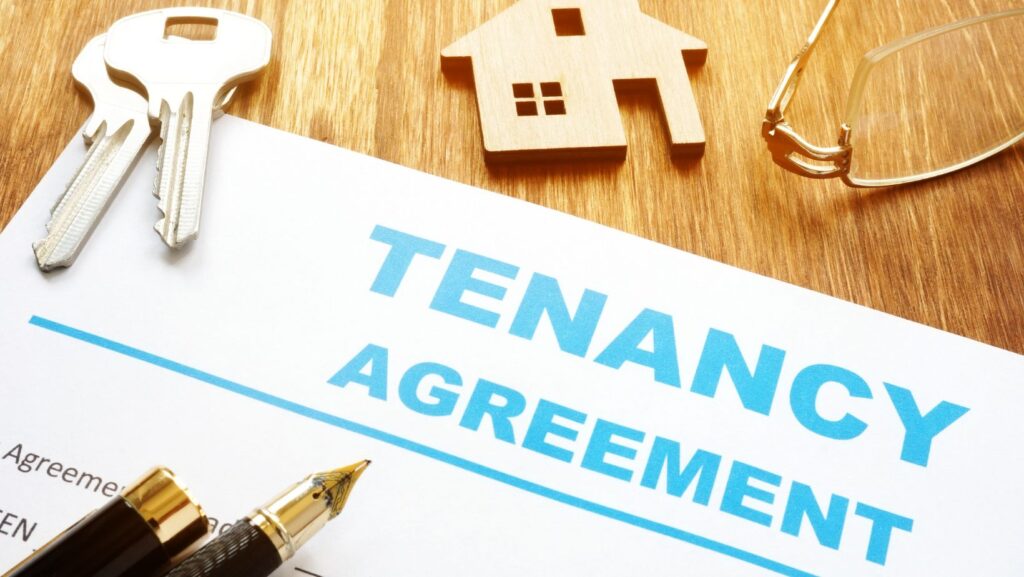Tips For Finding and Keeping Good Tenants
29 August 2023
If you’re a property owner or a landlord, you know that finding and retaining good tenants is essential for a successful rental business. In this blog, we’ll share valuable insights and actionable tips on how to attract, select, and maintain high-quality tenants for your rental property. Whether you’re a seasoned landlord or just starting out, our expert advice will help you navigate the tenant search process with confidence.
- Understanding the Tenant Profile
- Creating an Attractive Rental Listing
- Utilising Effective Marketing Strategies
- Streamlining the Tenant Screening Process
- Setting Clear Expectations with a Comprehensive Lease Agreement
- Creating a Positive Tenant Experience
- Rewarding Tenant Loyalty
- Handling Tenant Turnover Gracefully
- Ensuring Legal Compliance
Understanding the Tenant Profile
As a property owner or landlord, understanding the tenant profile you’re targeting is the foundation of successful tenant management. By knowing exactly who you want to attract, you can tailor your approach to align with their preferences, making the tenant selection process more efficient and effective.
How to Identify Your Ideal Tenant
Define Your Property’s Unique Selling Points
Begin by identifying the standout features of your rental property. Is it located in a bustling urban area or a quiet suburban neighborhood? Does it offer amenities like a garden, parking space, or a gym? Understanding your property’s strengths will help you narrow down your ideal tenant.
Consider Local Demographics
Research the demographics of the local area. Are you close to universities, business districts, or family-friendly attractions? This will give you insights into the types of tenants who are likely to be interested in your property.
Age, Lifestyle, and Family Size
Different tenants have different needs. Consider whether your property is best suited for young professionals, families, students, or retirees. The layout and amenities of your property should cater to the lifestyle preferences of your target tenant.
Creating an Attractive Rental Listing

Crafting an Eye-Catching Property Description
When potential tenants browse rental listings, the property description is often the first thing they read. A well-crafted description can spark interest and encourage them to learn more about your property.
Highlight Key Features and Benefits
List the key features of your property that align with your target tenant’s needs and wants. These could include the number of bedrooms and bathrooms, available amenities, nearby attractions, and any recent renovations or upgrades.
Captivating Photos: A Picture is Worth a Thousand Words
High-quality photos are essential for showcasing your property’s potential. Ensure the lighting is optimal and that each room is clean and well-staged before taking photos. Showcase the exterior, living spaces, bedrooms, kitchen, and any unique features that set your property apart.
Utilising Effective Marketing Strategies
When it comes to finding the right tenants for your property, effective marketing strategies play a pivotal role. By reaching out to the right audience through the right channels, you can increase your chances of attracting tenants who are a perfect fit for your rental.
Leveraging Online Rental Platforms
Online rental platforms have become a go-to resource for tenants searching for their next home. Websites like Rightmove, Zoopla, and OnTheMarket are popular platforms where potential tenants search for rental properties. Ensure your listings on these platforms are complete, accurate, and well-presented. Use high-quality photos, compelling descriptions, and accurate property details to capture the attention of potential tenants.
Tapping into Social Media and Local Channels
Social media platforms provide a great opportunity to reach a wider audience. Create engaging posts about your rental property and share them on platforms like Facebook, Instagram, and Twitter. Join local community groups and forums where potential tenants might be seeking housing. Engage in conversations and share information about your property when appropriate. Consider placing ads in local newspapers, magazines, or community bulletin boards. These traditional methods can still be effective in reaching a more localised audience.
Networking with Real Estate Agents
Building relationships with local real estate agents can be mutually beneficial. Real estate agents often have clients looking for rental properties, and they can refer potential tenants to you. Reach out to real estate agents in your area and establish open lines of communication. Provide them with details about your property so they can match it with suitable clients. You can also consider creating a referral partnership with real estate agents. Offer them incentives for bringing tenants to your property or refer your property to their clients.
Streamlining the Tenant Screening Process
Tenant screening is a crucial step in ensuring that you choose tenants who will treat your property with respect and uphold their responsibilities as renters. Conducting background checks helps verify a tenant’s identity and criminal history. Moreover, reviewing a tenant’s credit history can give you insight into their financial responsibility. This helps gauge their ability to pay rent consistently and on time.
Checking References and Rental History
Contacting previous landlords provides valuable insights into a tenant’s rental history. Ask about their punctuality with rent payments and their conduct as a tenant. It may also be beneficial to reach out to personal references provided by the tenant to gain a broader understanding of their character and reliability.
Interviewing Prospective Tenants: Key Questions to Ask
Conducting interviews with prospective tenants allows you to get to know them better and assess whether they are a good fit for your property. Ask about their reasons for moving, their desired move-in date, and their plans for the future. This helps you understand their stability and commitment. Inquire about their source of income, employment status, and monthly income. This helps ensure they can afford the rent. Finally, discuss your expectations as a landlord and encourage them to share their expectations as tenants. This helps set clear terms from the beginning.
Setting Clear Expectations with a Comprehensive Lease Agreement

A comprehensive lease agreement is the cornerstone of a successful landlord-tenant relationship. It outlines the rights, responsibilities, and expectations of both parties, helping to prevent misunderstandings and conflicts down the line.
Defining Rights and Responsibilities
Clearly define how the property can be used and any restrictions, such as subletting or using the property for commercial purposes. Specify who is responsible for maintaining different aspects of the property, such as the lawn, appliances, and utilities. Outline the terms and conditions related to the security deposit, including how it will be handled and when it will be returned.
Outlining Maintenance Procedures and Policies
Provide instructions for reporting maintenance issues and establishing a timeline for addressing them. You will also need to include emergency contact information for urgent maintenance situations, such as plumbing leaks or electrical problems. Clarify to your tenants how often you’ll conduct property inspections and how much notice you’ll provide to the tenant.
Addressing Rent and Payment Terms
Clearly state the rent amount and the due date each month. Specify acceptable payment methods and any late fees. If you anticipate rent increases, outline how and when they will be communicated to the tenant. Remember to clearly detail procedures for bounced checks, online payments, and other payment-related matters.
Creating a Positive Tenant Experience
A positive tenant experience not only encourages tenant loyalty but also contributes to a harmonious living environment. By nurturing an open line of communication with your tenant, you can ensure they feel comfortable reaching out to you with any concerns, questions, or requests. You can also provide multiple contact details, such as phone, email, or a designated tenant portal to help tenants get in touch.
Addressing Maintenance and Repairs Promptly
It is paramount that you address maintenance requests and repairs promptly. Timely resolutions show tenants that their comfort and safety are a priority. You should also give advance notice when scheduling non-urgent maintenance or inspections, respecting your tenants’ privacy and convenience.
Fostering a Respectful and Safe Environment
Encourage tenants to be respectful of their neighbors and the property. Outline expectations for noise levels, common area usage, and general conduct. Highlight any security features of the property, such as secure entry systems or well-lit parking areas. Provide tenants with information about emergency procedures, including fire exits and emergency contacts.
Rewarding Tenant Loyalty
Building a strong and lasting relationship with your tenants involves recognising and appreciating their loyalty. By offering incentives and fostering a positive experience, you can encourage long-term tenancy.
Incentives for Long-Term Tenancy
Consider offering rent discounts for tenants who renew their lease for an extended period. This can motivate tenants to stay and save money. Similarly, you can provide upgrade options such as new appliances, paint refreshes, or flooring upgrades for tenants who commit to another lease term.
Periodic Property Upgrades and Improvements
Show your commitment to your property by maintaining it well. Regularly inspect the property for any necessary repairs or improvements. You should also plan periodic upgrades to enhance the property’s appeal. This could include modernising appliances, adding energy-efficient features, or refreshing common areas.
Appreciation Gestures
In certain cases, it can be beneficial to send personalised notes or emails on special occasions like birthdays or move-in anniversaries. This personal touch goes a long way in building rapport. You can even consider giving small seasonal gifts as a token of appreciation, this is particularly beneficial if you have elderly tenants who may feel isolated.
Handling Tenant Turnover Gracefully
Tenant turnover is a natural part of property management. Handling it gracefully ensures a smooth transition for all parties involved.
Managing End-of-Lease Processes
Initiate discussions about lease renewal well in advance. Provide tenants with options and clearly outline any changes to the lease terms. Follow legal notice requirements for lease termination or non-renewal. This gives both parties ample time to prepare for the transition.
Conducting Exit Interviews for Feedback
Conduct exit interviews with departing tenants to understand their reasons for leaving and gather feedback on their renting experience. Use the feedback to identify areas for improvement and make necessary changes to enhance the tenant experience.
Preparing the Property for New Tenants
Thorough Cleaning
After a tenant moves out, ensure the property is thoroughly cleaned, including carpets, windows, and appliances.
Repairs and Upgrades
Address any maintenance issues and consider making small upgrades to freshen up the property’s appeal.
Fresh Marketing
Update your rental listing with new photos and information to attract potential tenants to the newly improved property.
Ensuring Legal Compliance
Adhering to the legal framework that governs landlord-tenant relationships is essential for maintaining a successful and ethical rental property business. By staying informed and practicing fair and legal practices, you can safeguard your interests and those of your tenants.
Staying Informed About Tenant Laws and Regulations
Laws and regulations related to landlord-tenant relationships can change over time. Stay updated on these changes to ensure you’re operating within the legal boundaries. It is also crucial to remain aware of local ordinances that might impact your property. Different regions may have specific requirements regarding tenant rights, lease terms, and property maintenance.
Fair Housing Practices: Treating All Tenants Equally
Follow fair housing laws that prohibit discrimination based on factors such as race, color, religion, sex, national origin, disability, and familial status. Treat all applicants and tenants equally during the application process, lease terms, and tenant interactions. Avoid favouritism or bias.
Eviction Procedures: Last Resort Measures
Familiarise yourself with valid reasons for eviction, such as non-payment of rent, violation of lease terms, or damage to property. If eviction becomes necessary, ensure you follow the legal procedures in your jurisdiction. This usually involves providing proper notice and adhering to court proceedings. Whenever possible, attempt to resolve issues without resorting to eviction. Open communication can often lead to solutions that benefit both parties.
Raise Your Tenant Management Game with LevelUP
By implementing the tips and insights shared above, you’ll be equipped to attract, select, and maintain high-quality tenants who contribute to the success of your rental business. If you’re ready to elevate your property management journey, our team at LevelUP is here to support you. Whether you’re looking for expert advice, a tenant find service, or comprehensive property management services, or simply want to learn more, feel free to contact us. We will help unlock the full potential of your rental property and make tenant management a rewarding and successful endeavour.




